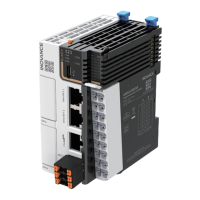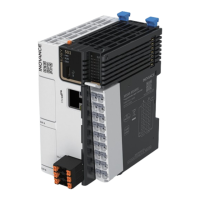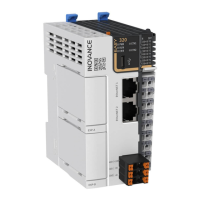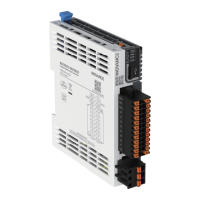
Do you have a question about the Inovance Easy521 and is the answer not in the manual?
| Brand | Inovance |
|---|---|
| Model | Easy521 |
| Category | Controller |
| Language | English |
Introduces the Easy521/Easy522/Easy523 series PLC, its features, and communication capabilities.
Lists the certifications, directives, and standards that the product complies with, as seen on the product nameplate.
Details the warranty terms, coverage, and conditions for the Inovance PLC equipment.
Provides essential safety precautions to be observed when using the PLC to prevent injury or damage.
Explains the meaning of DANGER, WARNING, and CAUTION labels used in the guide.
Offers general safety advice and reminders for safe operation and handling of the PLC.
Provides instructions and warnings for safely unpacking the PLC equipment and accessories.
Outlines the requirements and precautions for storing and transporting the PLC to prevent damage.
Covers general safety warnings and essential precautions to be followed before and during PLC installation.
Details safety instructions and grounding recommendations for performing wiring operations on the PLC.
Specifies pre-power-on checks and safety measures to be taken after the PLC is powered on.
Provides safety guidelines and precautions for operating the PLC correctly.
Outlines safety procedures and precautions necessary for performing maintenance on the PLC.
Details safety precautions and procedures for inspecting and repairing the PLC equipment.
Provides guidelines for the proper disposal of retired PLC equipment in accordance with regulations.
Describes the meaning and importance of safety labels affixed to the PLC device.
Explains the model naming convention and details the information found on the PLC's nameplate.
Identifies and describes the various components and indicators of the PLC unit.
Lists the general technical specifications, including program capacity, speed, and communication protocols.
Details the electrical specifications for the PLC's power supply requirements.
Provides comprehensive specifications for the PLC's digital input channels.
Details the electrical specifications for the PLC's digital output channels.
Specifies the recommended environmental conditions and parameters for installing the PLC.
Describes optimal installation positions and operational limits, including temperature derating.
Recommends the optimal horizontal installation position for the PLC, considering cooling and clearance.
Illustrates alternative installation positions for the PLC and provides cautions for vertical installation.
Highlights crucial precautions to be taken before installing or removing PLC master and modules.
Provides the physical dimensions of the PLC unit in millimeters for installation planning.
Describes the methods for mounting the PLC module onto a DIN rail.
Step-by-step guide on how to mount the main PLC unit onto a DIN rail.
Instructions for connecting extension modules to the master PLC unit using rail connectors.
Provides a guide on how to safely detach modules from the PLC assembly.
Details the terminal assignments and signaling for input and output connections.
Explains the wiring configurations for SINK input types on the PLC.
Details the wiring configurations for the PLC's output terminals.
Provides an overview of the PLC's networking capabilities and supported communication protocols.
Offers guidance on selecting appropriate cables for different communication interfaces.
Details the specific wiring procedures for RS485 and Ethernet communication ports.
Provides specifications and requirements for EtherCAT communication.
Details the pin assignments, cable types, and requirements for EtherCAT communication.
Explains the recommended setup and topology for RS485 bus communication.
Describes the steps to start and stop the PLC operation.
Guides the user on how to program the PLC using an SD card.
Provides instructions for upgrading the PLC's firmware using an SD card.
Details the types, descriptions, slots, and IDs of various extension cards for the PLC.











